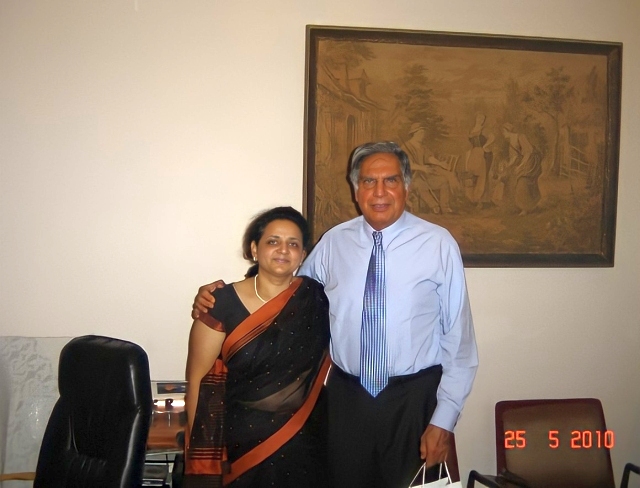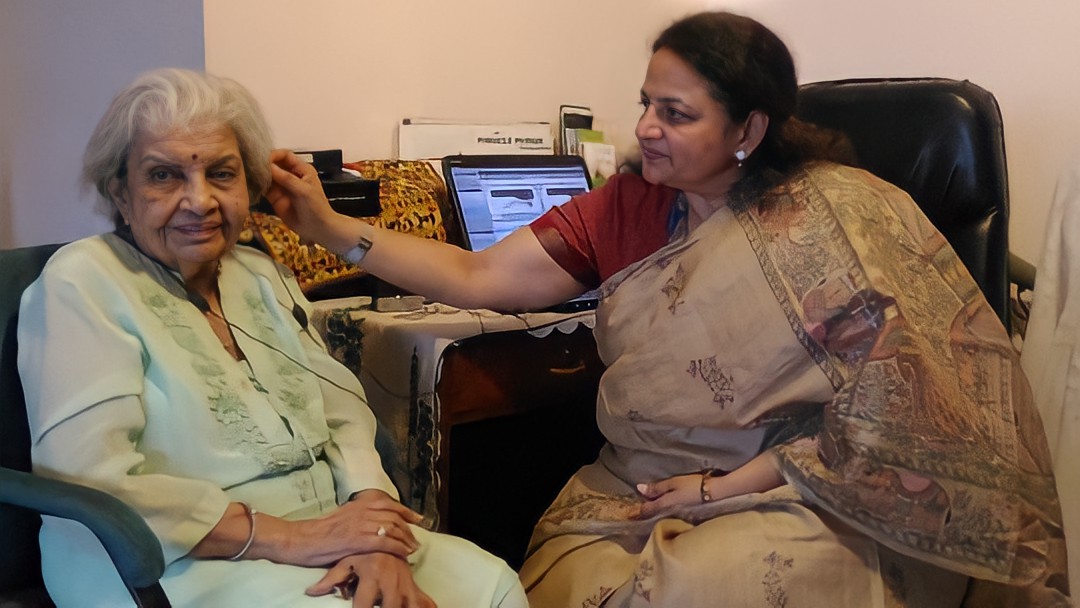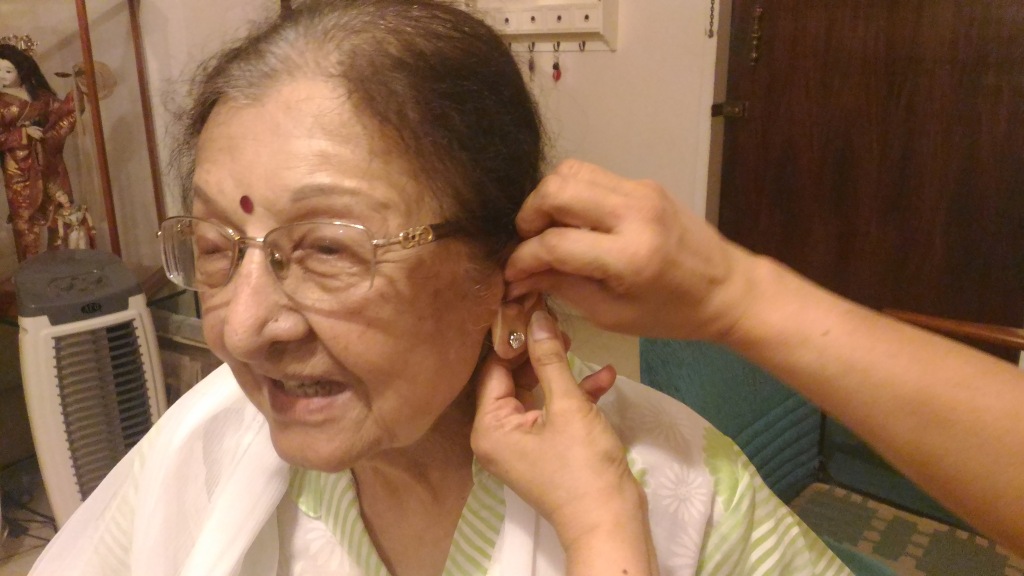
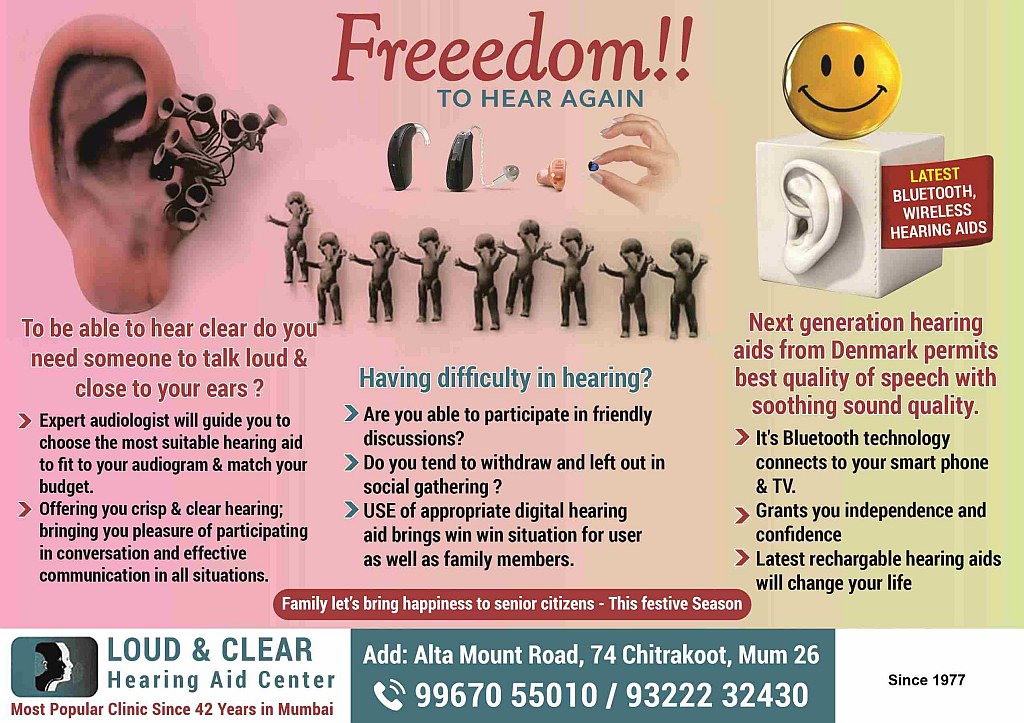
Audiology And Hearing Aid Services
1. Hearing Aid Services
Step 1. Take a hearing test – Audiogram
Step 2. Receive counselling for hearing aid selection
Step 3. Hearing aid trial, fitting & dispensing
Step 4. Therapy for improved listening – after fitting
2. Expert programming & fine tuning of Digital HA
3. Tinnitus and its management
4. Hearing aid repairs & maintenance
5. Custom Earmolds for Doctors, Musicians & Swimmers
6. Hearing aid batteries & chargers, remote control
7. Bluetooth accessories, Mic & multi Mic
Audiogram – Hearing Loss Test & Hearing Loss Survey
Our licensed and certified hearing expert Audiologist at Loud & Clear Hearing Aid Centre will perform specialized test to determine the degree of your hearing loss and how hearing aids may help improve your hearing. Take a Free online diagnostic test, specially created at Loud & Clear for you to understand what kind and degree of hearing loss you may have.
learn more
Hearing Aid Evaluation And Selection
Our licensed professionals, Audiologist Dr. Vora, will discuss the benefits of hearing aid and show you the many styles, colors and technologies available. You may be able to try different hearing aids in the Centre. Some styles are custom-fit and require impressions of your ears.
learn more
Hearing Aid Trial, Fitting & Dispensing
After you have decided upon a hearing aid style, a fitting appointment is next. Your hearing aids are programmed specifically to your needs. Any adjustments can be made at this time to make sure the settings and fit are right. You should always get your Fitting and Audiogram test done from an authorized Audiologist only.
learn more
Custom Earmolds And Earplugs
You hear best when your hearing aid fits well. We produce custom-made earmolds that uniquely fit the contours of your ears, giving you the best sound. Custom earplugs provide long-lasting comfort and protection and may be for occupational purposes or home use.
learn more
Tinnitus Evaluation And Management
Many people in India suffer from tinnitus, often described as a ringing in the ear. Our specialists perform tinnitus evaluations to identify the impact of the problem on your daily life and determine if there are treatment options available.
learn more
Hearing Aid Repairs & Maintenance
We can make some hearing aid repairs at our office. More serious issues may require repairs by the manufacturer. Our staff will examine your hearing aids to determine any damage and how it may best be fixed.
learn more
Ear Plugs for Musicians, Swimmers and Doctors
These specialized earplugs are custom-made to help musicians, swimmers and doctors to reduce their risk of hearing damage due to exposure to high levels of sound. The earplugs help limit sound exposure but still provide the optimal music experience for performers and the audience.
learn more
How it Works




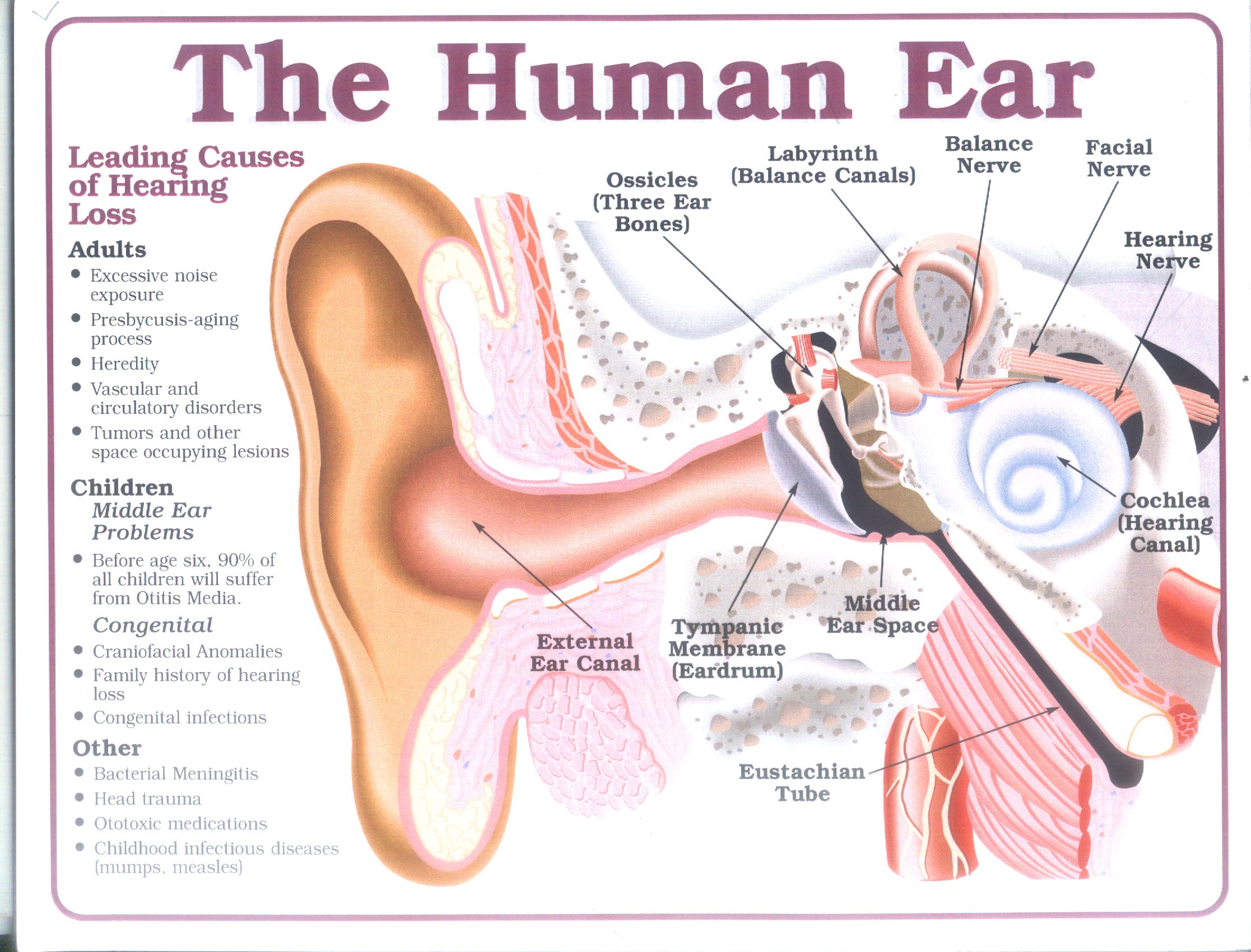
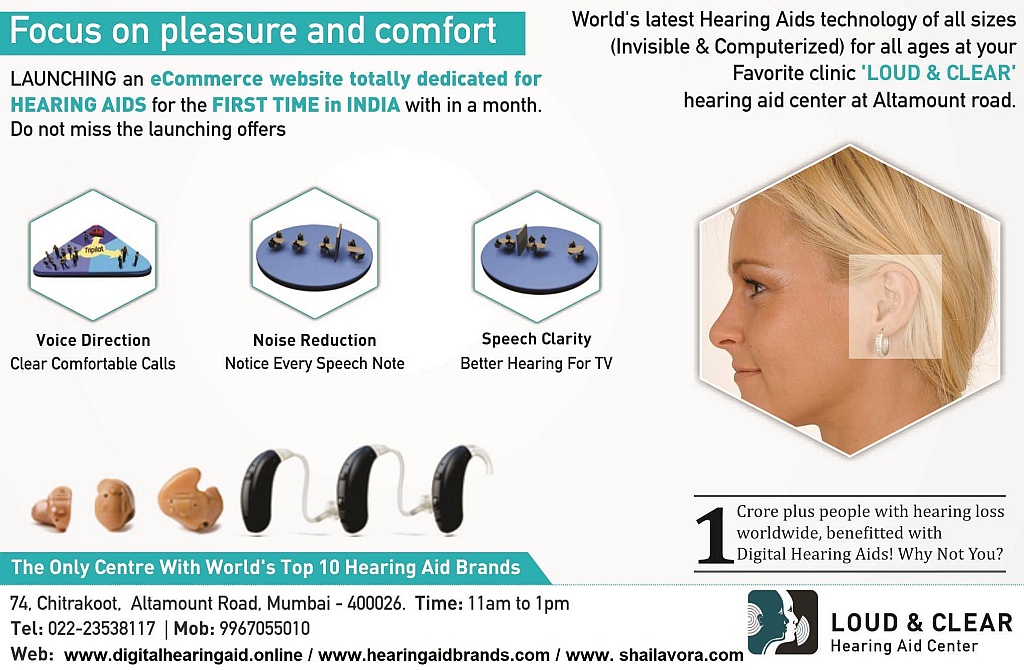
How 21st Century HEARING INSTRUMENT brings comfort and clarity
1. Offers Noise reduction
2. Supresses Feedback
3. Offers 3-D effect similar to natural Pinna Effect
4. 270-360 Degree Directionality
5. Customized amplification
6. Wind noise manager
7. Frequency Compression for better Speech clarity
8. Different Programs for different hearing enviornment
9. Blue Tooth Enabled for TV listening, Mobile use,
10. Anti Shock – Curbs sudden loud sounds
11. Cosmetic Look – from invisible to Behind the Ear Hearing Aid
12. Receiver and Microphone in the ear Canal for Speech Enhancement


Hearing Test
Let us take our hearing health survey and start your journey to better hearing
We believe in setting digital hearing aid programming based on the Hearing Test done in natural environment
Take Survey
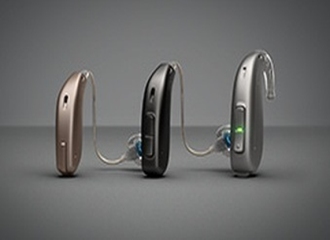
Guide To Hearing Aid
Selection of Hearing Aid is complex so let us make decision with professional counselling
Choose

Contact Us
Find out what Audiologist Smt. Shaila Vora can do to treat your hearing loss
Get in Touch

At the Time of Difficulty:
1. If you have difficulty in hearing; or clarity has deteriorated or you feel that the hearing aid is dead…
a) Check if the battery is over. Change the battery. Check the battery size and the positive side of the battery before inserting it in the battery compartment.
b) Check the wax guard and clean it.
c) Change wax guard if needed.
2. If the hearing aid is weak you may have:
a) A run-down battery
b) Wrong tone setting
c) Covered microphone
d) An aid that must be repaired
3. If the aid makes a low soft buzz or hum, you may have:
a) A bad battery
b) A defective aid needing to go to the shop
4. If the hearing aid whistles or has feedback you may have
a) A loose ear mould
b) Wax in the ear
c) Wax in the ear mould
d) An aid that needs repair
Don’t open or tamper with the mechanical part of the hearing aid yourself. You will invalidate your guarantee if you do so. Take it to an authorized repair person for help. Have him rent you another aid while yours is being repaired.
USER FRIENDLY ACCESSORIES :
Ear impressions for customized fitting:
At ‘Loud and Clear’ we use one of the world’s best impression material from West Germany i.e. non allergent material and does not lose its shape or get disfigured for life. Hence we suggest that it should be stored by the patient for a lifetime; because they may be needed later on.
BTE requires ear mould while In-the-canal (ITC) and Completely-in-canal (CIC) require shells on top of with the face plate is fitted and the entire Hearing Aid instrument remains within shell.
Inserting the ear mould into the ear:
• Turn off the hearing aid, or turn the volume all the way down while you attempt to wear it. Then you can turn on the machine as well as the volume control.
• Be gentle
• When removing the ear mould, again turn off the hearing aid, or turn the volume all the way down. Then gently pull it out
• In Analogue BTE keep the machine off the time of putting on the mould. Once worn, you can put it on
Cleaning and Maintaining for ear mould for BTE:
• Although it differs from person to person, for most people once or twice a week cleaning of the ear mould is sufficient.
• Carefully ease the tube connected to the ear mould from the hearing aid hook
• Put the ear mould and tube in a bowl of mild soapy water, letting it soak for at least 10 minutes to loosen any dirt or earwax.
• Rinse the ear mould and tube in lukewarm running water
• Dry it with a soft cloth
• Let the ear mould dry overnight on absorbent cloth or paper with the sound outlet end of the ear mould pointing down.
• Attach the tube and ear mould to the hearing aid.
Batteries:
It is very important to use the correct size and type cell for your instrument.
To insert or replace the battery, open the compartment by placing your fingernail under the edge of the swing out door and gently pull forward.
To Remove: Existing batteries are removed by pushing the cell out the top of the fully open door. DO NOT pull it out of the door.
Inserting Batteries: Place the new battery in the compartment with the plus (+) sign facing up.
Close the battery compartment by swinging the door until it snaps shut. Never force the door shut as it could result in serious damage
Your Digital ITC and CIC is ‘on’ any time a functioning battery is properly placed in the compartment and the battery door is closed.
To turn the instrument “off’, simply open the battery compartment door so the battery is no longer in contact with the internal components. This is recommended any time your instrument is not in use to preserve battery life.
On, Off and Volume Control: Generally in most instruments anticlockwise movement increases the volume whereas clockwise movement decreases the volume in ITC. Generally, in BTE the downward movement brings about increase in the volume.
Feedback: When the instrument is turned ‘on’ as the volume control is adjusted, or when you use the telephone, you may hear whistling noise known as feedback.
This is due to amplified sounds releasing from the ear and reflecting off your hand into the instrument’s microphone. It is more likely to occur during insertion, removal and volume adjustment. It should stop when you move your hand.
HEARING AID DAILY USE MANUAL
1. The hearing aid should be turned off when not in use. Remove the battery if the hearing aid is not used for a couple of days. Place the battery in a cool, dry place and wipe the hearing aid clean.
2. Even though you will definitely find your hearing aid so comfortable that it will be easy to forget you are wearing one – Don’t forget to remove it before taking a shower; before washing your face or before swimming.
3. Don’t leave your hearing aid in a pocket of clothing to be washed. Always retain a box with you – one on the bedside table and one with you in your pocket or purse.
4. Temperature much above normal could easily damage your instrument. Hence, DO NOT leave your hearing aid in a car, on the window ledge on a sunny day.
5. Humidity can damage your hearing aid, so never store it in the fridge.
6. Try to avoid situations where your hearing aid could fall for any distance to a hard surface. Change batteries and clean your hearing aid on a table/ bed/ sofa to minimize the risk of dropping your aid.
7. Never use alcohol, solvents or cleaning fluid on your hearing aid and remember, it needs absolutely no oil of any kind. Clean the outside of your hearing aid with a dry soft cloth. While you are using hearing aid, do not put oil/ ear drops in your ears and if you have to, then dry your ear canal thoroughly before wearing Hearing Aid.
8. Remove your hearing aid before using hair spray. The ingredients in hair spray can make hearing aid volume controls stick and may clog the microphone opening.
Helping someone who has hearing loss
Do you suspect that someone you love may have hearing loss?
These can be some of the early signs of hearing loss:
- you continually need to speak louder for them to hear
- you get the sense your loved one is missing out on parts of conversation
- you ask them to turn down the volume on the TV
- you see loved ones struggling to be engaged in conversation when background noise is present
How To Clean your hearing aid
How to Clean a Receiver in the Canal (RIC) Hearing Aid
How to clean a hearing aid with an earmould
How to clean a hearing aid with a slim tube
How to clean a custom hearing aid
How to clean a hearing aid with an earmould
iPhone
How to connect my hearing aids to my iPhone?
How to connect rechargeable hearing aids to the myPhonak app on iPhone
How to connect non-rechargeable hearing aids to the myPhonak app on iPhone
Android Smartphone
How to connect my hearing aids to Android?
How to connect rechargeable hearing aids to the myPhonak app on Android
How to connect non-rechargeable hearing aids to the myPhonak app on Android
Hearing aid accessories
How to set up the TV Connector
How to use Phonak PartnerMic
How to use Roger Select
Care and maintenance
Receiver in canal (RIC) hearing aids
How to clean a RIC hearing aid
How to change the Dome
How to change the CeruShield wax filter of the RIC receiver
How to change the CeruStop on a RIC custom earpiece
Behind the ear (BTE) hearing aids
How to clean a hearing aid with an earmould
How to clean a hearing aid with a slim tube
In the ear (ITE) hearing aids
How to clean a custom hearing aid
Loud & Clear Hearing Aid Centre
74, Chitrakoot, Altamount Rd,
Nr. Mukesh Ambani’s House,
Mumbai – 26. India
Email : shailavora@gmail.com


